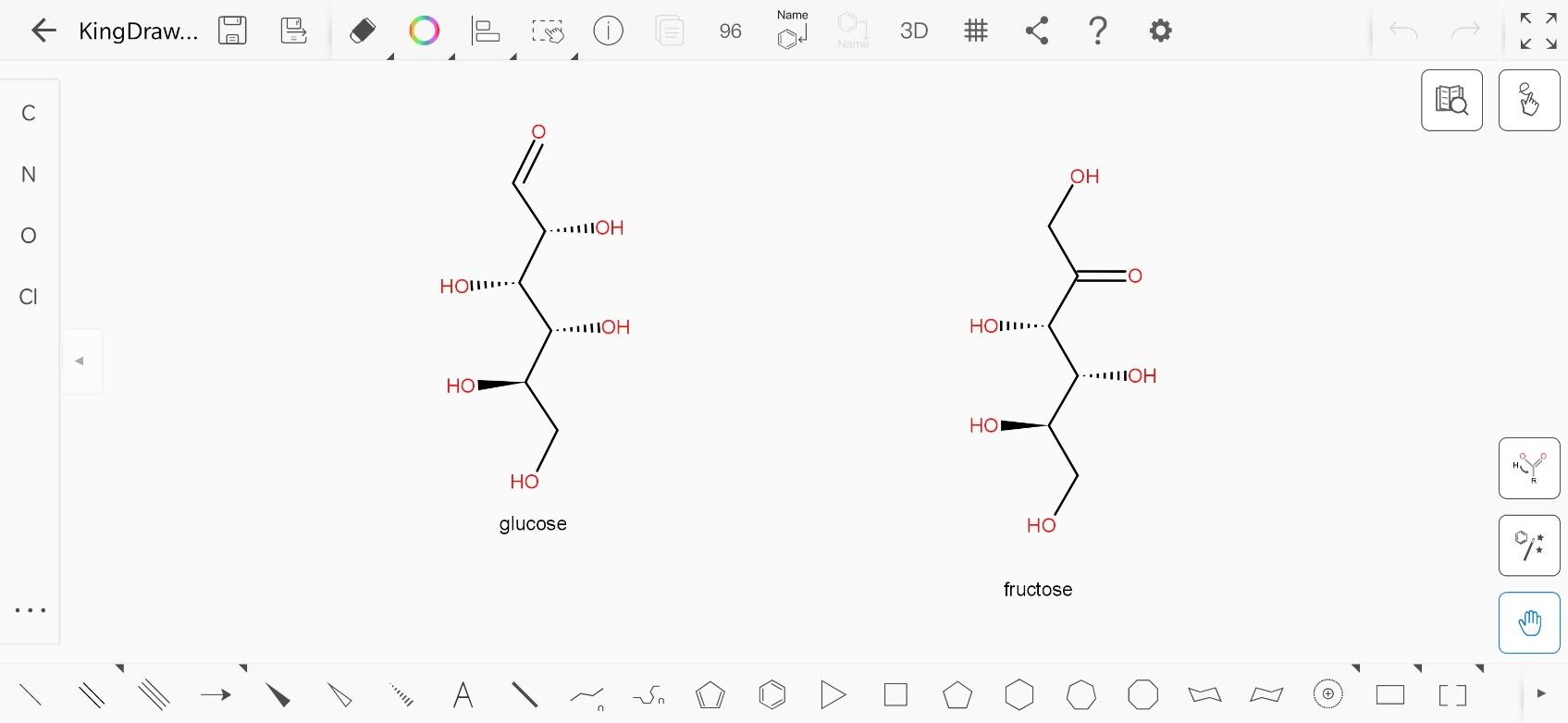
Number of chiral atoms in Glucose and Fructose are:
(A).4 in each
(B).3 in each
(C).4 in glucose and 3 in fructose
(D).3 in glucose and 4 in fructose
Answer
491.4k+ views
Hint: Glucose and fructose are isomers, i.e. they have the same chemical formula but differ in connectivity.
Complete answer:
First of all, a chiral carbon is a carbon which has four different atoms or groups of atoms attached to it. The chiral atom in a molecule makes it optically active. Glucose and fructose are structural isomers. Their molecular formula is ${C_6}{H_{12}}{O_6}$. They both have different parent functional groups. The functional group in glucose is an aldehyde, while in fructose is a ketone.
The open chain structure of glucose is:

And the open chain structure of fructose is:

A chiral carbon is always an $s{p^3}$ carbon. If we number the carbon atoms from the top in each structure, the carbon numbered 2,3,4 and 5 are chiral in glucose as they have 4 different atoms or molecules attached to them. Similarly, carbon numbered 1,3,4,5 are chiral in fructose.
Hence, the number of chiral atoms in glucose and fructose are 4 each.
Additional information:
Generally, glucose and fructose don’t exist in this open chain form. For the sake of convenience, we imagine their open chained structures. But in reality, they exist in chain forms. Glucose is a six membered ring while fructose is a five membered ring.
Note:
A student might also consider $s{p^2}$ carbon to be chiral if it has all different atoms or molecules attached to it, but only $s{p^3}$ carbons can be classified as chiral or achiral.
Complete answer:
First of all, a chiral carbon is a carbon which has four different atoms or groups of atoms attached to it. The chiral atom in a molecule makes it optically active. Glucose and fructose are structural isomers. Their molecular formula is ${C_6}{H_{12}}{O_6}$. They both have different parent functional groups. The functional group in glucose is an aldehyde, while in fructose is a ketone.
The open chain structure of glucose is:

And the open chain structure of fructose is:

A chiral carbon is always an $s{p^3}$ carbon. If we number the carbon atoms from the top in each structure, the carbon numbered 2,3,4 and 5 are chiral in glucose as they have 4 different atoms or molecules attached to them. Similarly, carbon numbered 1,3,4,5 are chiral in fructose.
Hence, the number of chiral atoms in glucose and fructose are 4 each.
Additional information:
Generally, glucose and fructose don’t exist in this open chain form. For the sake of convenience, we imagine their open chained structures. But in reality, they exist in chain forms. Glucose is a six membered ring while fructose is a five membered ring.
Note:
A student might also consider $s{p^2}$ carbon to be chiral if it has all different atoms or molecules attached to it, but only $s{p^3}$ carbons can be classified as chiral or achiral.
Recently Updated Pages
The correct geometry and hybridization for XeF4 are class 11 chemistry CBSE

Water softening by Clarks process uses ACalcium bicarbonate class 11 chemistry CBSE

With reference to graphite and diamond which of the class 11 chemistry CBSE

A certain household has consumed 250 units of energy class 11 physics CBSE

The lightest metal known is A beryllium B lithium C class 11 chemistry CBSE

What is the formula mass of the iodine molecule class 11 chemistry CBSE

Trending doubts
State the laws of reflection of light

One Metric ton is equal to kg A 10000 B 1000 C 100 class 11 physics CBSE

Difference Between Prokaryotic Cells and Eukaryotic Cells

How do I convert ms to kmh Give an example class 11 physics CBSE

Describe the effects of the Second World War class 11 social science CBSE

Which of the following methods is suitable for preventing class 11 chemistry CBSE




